|
魚谷繁礼(Shigenori Uoya)是一位来自日本京都的建筑师,1977年出生于日本兵库县。2001年毕业于京都大学的工学部,两年后获得该大学工学部的硕士研究生学位,目前担任京都大学的兼职讲师和京都工业大学的特聘教授。魚谷繁礼(Shigenori Uoya)受印际之邀,将于6月27日(星期日)早上09:00 线上授课 【予见东方の日本设计大师课】,欢迎扫码报名。 Shigenori Uoya is an architect from Kyoto, Japan. He was born in 1977 in Hyogo Prefecture, Japan. He graduated from the Department of Engineering at Kyoto University in 2001 and received a master's degree in the Department of Engineering at Kyoto University two years later. He currently works as an adjunct lecturer at Kyoto University and a distinguished professor at Kyoto University of Technology. 植根于日本当地的传统建筑,建筑师魚谷繁礼更擅长旧房的改造,像町屋改造成及旅馆,亦或是旧宅改造成带有中庭花园的联排别墅。随着町屋在日本的城市中逐渐消失,大多开发商都不选择重建,然而建筑师这样做旨在以新代旧,来致敬日本传统的建筑及室内设计。 Rooted in traditional Japanese architecture, architect Friti Yitani specializes in converting old houses, such as machiya houses into hotels and townhouses with atrium gardens. With matiya disappearing from Japan's urban landscape, most developers have chosen not to rebuild, but the architects are doing so in a way that pays homage to traditional Japanese architecture and interior design by replacing the old with the new. 魚谷繁礼的设计风格带有古朴的侘寂和宁静的极简日式,他试图在新旧元素之间找到完美的平衡,让城市中的旧宅也有它们留存百世的魅力。在不破坏城市的建筑景观情况下,保留老房子的独特韵味,让人们看到旧事物的美好,融入新时代的设计元素,这也是设计中最具挑战的部分了。 With his elaborate design style of quaintly wabi-sabi and tranquil minimalism of Japan, Iotani tried to find the perfect balance between old and new elements, giving the city's old houses their enduring charm. The most challenging part of the design is to preserve the unique charm of the old house without destroying the architectural landscape of the city, to let people see the beauty of the old things, and to integrate the design elements of the new era. 京都当代的传统文化和设计理念让魚谷繁礼更多地思考:怎么样在这个快消时代去停下脚步,设计一个静谧的栖息地。用现代的思维去诠释传统的建筑,这才是当下魚谷繁礼的设计理念。一座不起眼的民宅,也可以是灵魂的避难所;一间低调的町屋,也可以是喧嚣城市中温暖的去处;一颗执著的赤诚之心,是作为设计出发的好起点。 Kyoto's contemporary traditional culture and design philosophy have made Fritani think more about how to stop and design a quiet habitat in this era of rapid extinction. To interpret traditional architecture with modern thinking is the current design concept of Yugu ritual. A humble house can also be a refuge for the soul; A low-key machiya can also be a warm place in the hustle and bustle of the city. A persistent and sincere heart is a good starting point for design.
| 
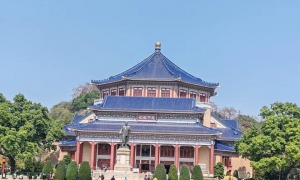 走进中山纪念堂,了解一代大师吕彦直
我去过中山纪念堂很多次,大多是去看公益演出。有时路过,也会被它的外观吸引,不自
走进中山纪念堂,了解一代大师吕彦直
我去过中山纪念堂很多次,大多是去看公益演出。有时路过,也会被它的外观吸引,不自
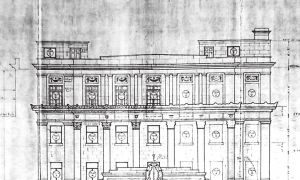 业师和雇主眼中的吕彦直—— 一份 1928 年
编者按:
2024年是吕彦直先生(1894年7月28日-1929年3月18日)诞辰130周年。他是中
业师和雇主眼中的吕彦直—— 一份 1928 年
编者按:
2024年是吕彦直先生(1894年7月28日-1929年3月18日)诞辰130周年。他是中
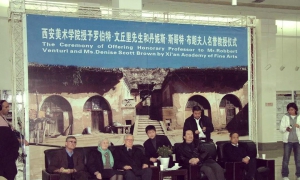 罗伯特·文丘里:后现代主义建筑的先驱与影
文丘里的生平简介
后现代主义建筑革命的领军人物罗伯特·文丘里,于2018年9月18日在家
罗伯特·文丘里:后现代主义建筑的先驱与影
文丘里的生平简介
后现代主义建筑革命的领军人物罗伯特·文丘里,于2018年9月18日在家
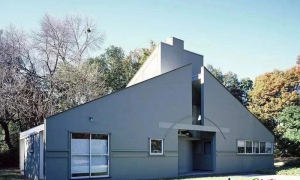 后现代主义的人文设计师:评罗伯特·文丘里
罗伯特·文丘里的后现代主义建筑理论思想对国际建筑设计行业具有极其深远的影响。
后现代主义的人文设计师:评罗伯特·文丘里
罗伯特·文丘里的后现代主义建筑理论思想对国际建筑设计行业具有极其深远的影响。
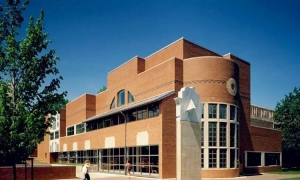 后现代主义建筑的奠基人——罗伯特•文丘里
罗伯特·文丘里是世界著名的建筑师,1925年出生于美国宾夕法尼亚州费城,在普林斯顿大
后现代主义建筑的奠基人——罗伯特•文丘里
罗伯特·文丘里是世界著名的建筑师,1925年出生于美国宾夕法尼亚州费城,在普林斯顿大
 走进中山纪念堂,了解一代大师吕彦直
我去过中山纪念堂很多次,大多是去看公益演出。有时路过,也会被它的外观吸引,不自
走进中山纪念堂,了解一代大师吕彦直
我去过中山纪念堂很多次,大多是去看公益演出。有时路过,也会被它的外观吸引,不自
 业师和雇主眼中的吕彦直—— 一份 1928 年
编者按:
2024年是吕彦直先生(1894年7月28日-1929年3月18日)诞辰130周年。他是中
业师和雇主眼中的吕彦直—— 一份 1928 年
编者按:
2024年是吕彦直先生(1894年7月28日-1929年3月18日)诞辰130周年。他是中
 罗伯特·文丘里:后现代主义建筑的先驱与影
文丘里的生平简介
后现代主义建筑革命的领军人物罗伯特·文丘里,于2018年9月18日在家
罗伯特·文丘里:后现代主义建筑的先驱与影
文丘里的生平简介
后现代主义建筑革命的领军人物罗伯特·文丘里,于2018年9月18日在家